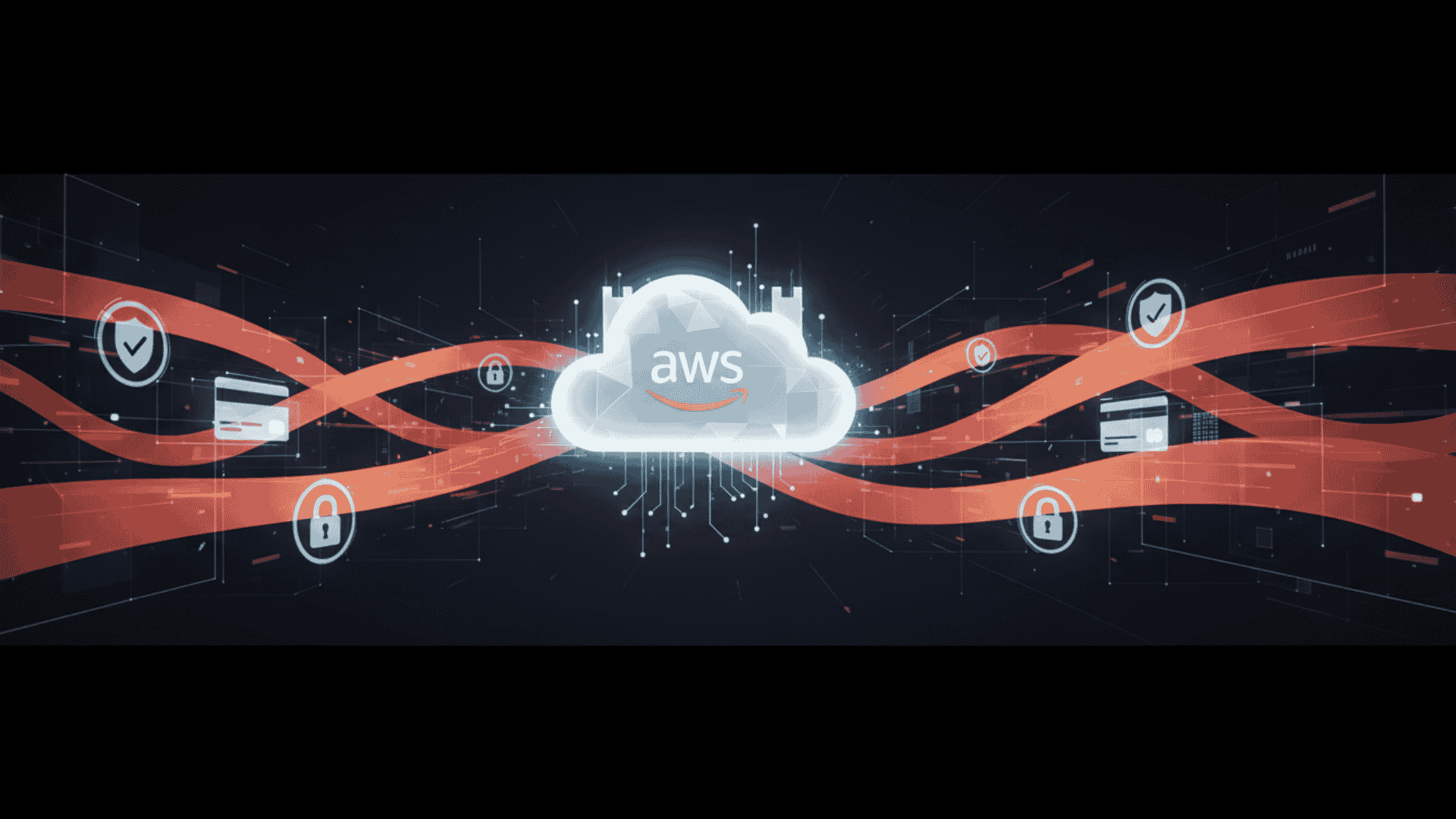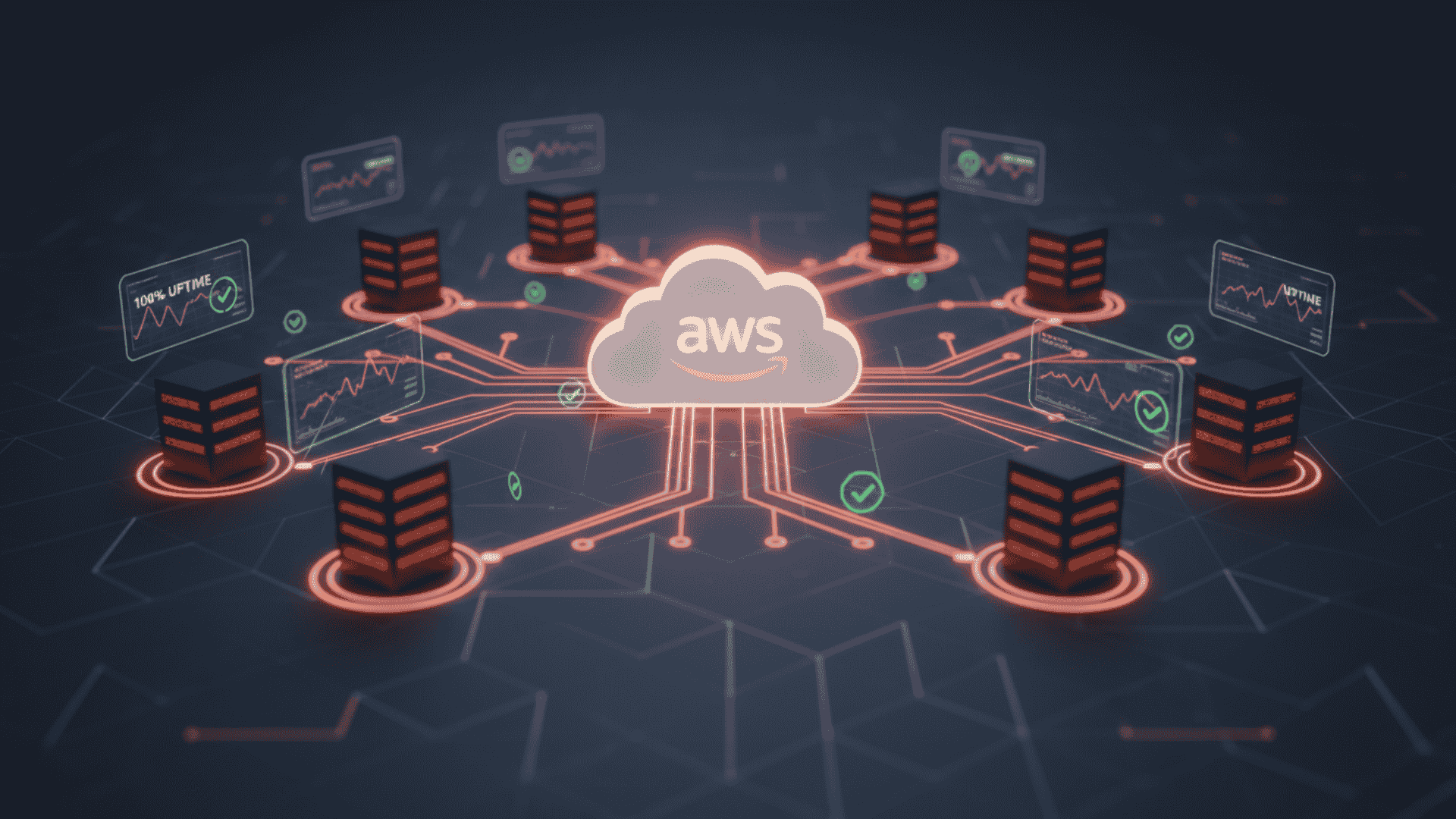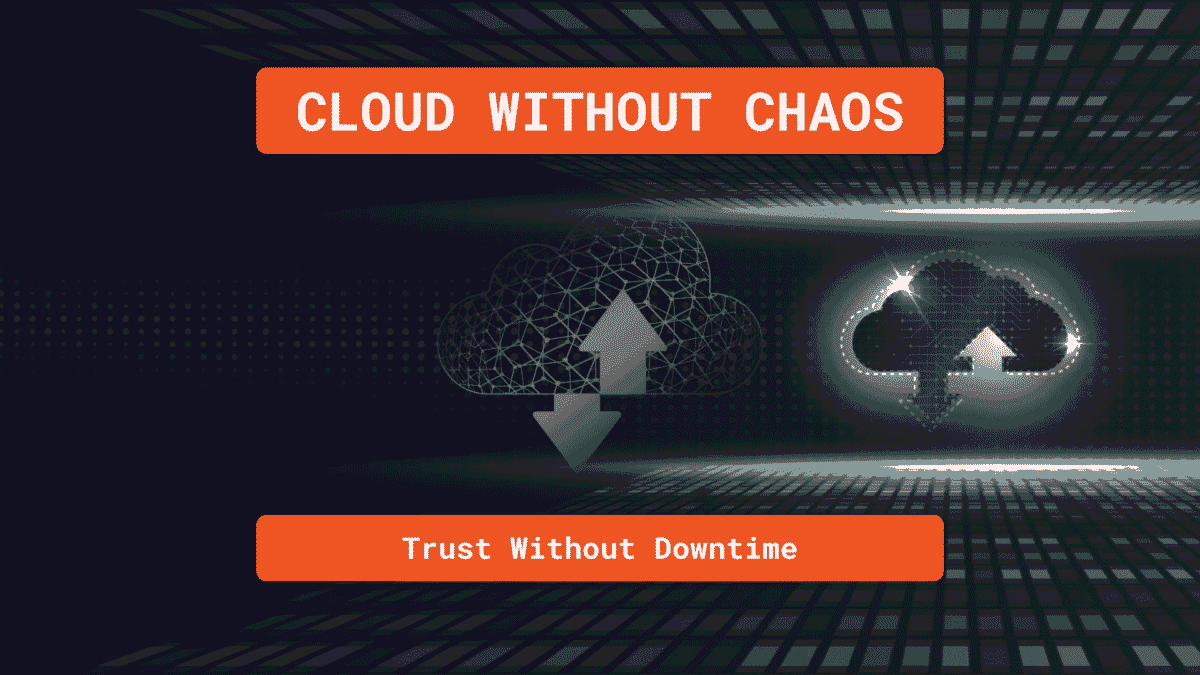
Fintech Cloud Cost Strategy
September 13, 2025Trust Without Downtime
Turning Migration into a Strategic Advantage
For financial technology companies, trust is everything. Reputation is protected by ‘Trust Without Downtime’. Customers expect every tap, transfer, top-up, trade, and transaction to work instantly. That’s why downtime during migration is risky for any fintech. It can lead to serious trust issues. We’ve all heard the horror stories before. Our message to you? Don’t become one.
The good news is that with the right cloud migration services, financial technology companies can keep their reputation safe and protect user confidence. We’ve helped South African financial technology companies migrate to AWS without anyone (not even our clients themselves, we’re proud to say) even noticing. And this blog is about how and why we do it. Let’s start with the ‘why’.

Why Downtime Destroys Trust in Cloud Migration
It only takes a few minutes offline for fintech customers to lose confidence. Unlike other industries, fintech customers do not tolerate outages. They expect constant and 100% availability.
Downtime leads to angry support calls, nervous investors, and serious compliance risks. It can also drive users to switch to competitors. Why risk it?
In short: downtime damages reputation even faster than it damages your infrastructure.

Zero Downtime Migration: Turning Risk into Reliability
When done right, migration shows customers and investors that your fintech is strong and ready to scale. Many financial technology companies come out stronger because they treat migration as a chance to prove their strategy.
Here’s the ‘how’:
Resilient Cloud Migration Frameworks That Scale
Automate Everything You Can: Manual processes often fail, especially during migration. Automated deploys and repeated testing create reliable results. Automation cuts human error and speeds up recovery. Our motto is simple: Build. Test. Commit.
Blue/Green Deployments Reduce Risk: Instead of moving all users at once, always run your old and new environments in parallel. Once the new setup is stable, traffic is shifted gradually. This reduces risk and makes the cutover invisible to customers. A basic rule of thumb.
Canary Rollouts Catch Issues Early: Once performance is stable, expand gradually. This approach isolates risk and prevents big outages .
Practice Rollbacks Until They’re Routine: A rollback plan isn’t useful if no one knows how to execute it. Fintechs that rehearse rollback procedures respond faster and stay calmer if problems arise.
Secure Fintech Cloud Migration Is the New Trust Standard
Compliance must be built in, not added later: If you read our Cloud Without Chaos blogs, you already know this message well. Because of that, we repeat it often. Before migration starts, encryption, monitoring, and logging must all be in place. Otherwise, adding them later becomes costly and risky. In addition, every migration should follow POPIA, FSCA, and FIC rules from day one. As a result, your fintech stays safe and trusted. When compliance is part of the plan, trust grows faster. That is why Trust Without Downtime is not only a promise — it is a clear advantage.

Skunk Tip: Treat failovers like fire drills. If they feel boring, you’re doing them right.
Kinetic Truth Bomb: If your DR plan starts with “check Slack,” your uptime plan ends with chaos.
How AWS Fintech Migrations Build Customer Confidence
Your engineers are talented, and they know your product better than anyone. But migration isn’t their day job. It’s ours. When your internal team shoulders the entire process, the best outcome is usually “it worked.” When we do it, the outcome is always “holy shit we’re better than ever.”
Working with a partner that knows how to get the best out of AWS goes beyond getting it done. It turns migration into a strategic advantage:
Our:
- Proven playbooks ensure resilience-first cutovers that customers never notice.
- Specialist expertise in automation, compliance, and observability unlocks benefits faster.
Your:
- Added bandwidth frees your developers to focus on building features that drive growth.
It’s not about whether your team could handle it. It’s about letting them focus where they shine while we design a migration that leaves you better. And ready to scale the improvement.

Case Study: Achieving Continuous Uptime in AWS Migration
One South African fintech reached out to us with a challenge: migrate and modernise their payments platform to AWS while keeping 24/7 uptime.
Here’s what we did:
- Designed a blue – green strategy.
- Automated monitoring and scaling.
- Rehearsed roll back scenarios with the engineering team.
- Embedded compliance checks into every stage.
The result? Zero downtime during migration, a 30% reduction in ongoing infrastructure costs, and a successful FSCA audit within three months. Customers never noticed. And customer satisfaction scores actually increased.

Cloud Migration Without Downtime for Fintechs
Fintechs that master reliability can turn it into a driver of growth. As a result, reliability becomes a clear advantage when competing for users, partners, and funding.
A cloud migration that proves your reliability also sends a strong message to the market. It shows that your fintech is built for long-term success. In the end, good engineering is not only smart — it is good business.

Frequently Asked Questions
-
What are the best strategies for achieving cloud migration without downtime for fintechs?
Fintechs can achieve cloud migration without downtime by automating deployments, using blue/green environments, and testing rollback plans. These methods ensure stability, maintain customer trust, and reduce human error. Partnering with experts who specialize in resilience-first AWS migrations adds an extra layer of security and precision. -
How does automation improve reliability during AWS fintech migrations?
Automation removes manual errors that often cause outages. It helps maintain predictable, repeatable outcomes. By automating testing, rollouts, and monitoring, fintechs can detect issues early and recover faster. This process builds user confidence and ensures a seamless experience. -
Why is zero downtime so important for financial technology companies moving to the cloud?
In fintech, every transaction counts. Even a few minutes of downtime can result in lost trust, failed transactions, and compliance risks. A zero-downtime migration shows customers and investors that the platform is reliable, secure, and ready to scale without interruption. -
How do AWS migration case studies demonstrate continuous uptime success?
Case studies show how real fintechs maintained 24/7 operations during AWS migrations. They highlight steps like automated rollbacks, live monitoring, and compliance integration. These examples prove that resilience-first migration strategies protect both performance and reputation. -
What makes Kinetic Skunk’s approach to fintech cloud migration different?
Kinetic Skunk focuses on resilience-first frameworks designed to prevent downtime. The team combines automation, observability, and compliance expertise. Their approach lets fintech developers focus on innovation while Kinetic Skunk ensures stability, scalability, and continuous uptime during AWS migration.
Let’s Talk
We’ve helped dozens of South African fintechs reframe the way they think about the cloud.
When you’re ready to move beyond servers to strategy:
Let’s chat. Call or email us to kickstart your cloud strategy today.
We’re KineticSkunk™.
Let’s build the cloud strategy your fintech actually needs.




